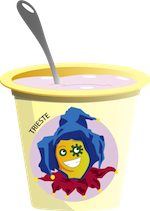Team:Trieste/parts/9
From 2012.igem.org
Corsogiulia (Talk | contribs) |
|||
| Line 24: | Line 24: | ||
</br> | </br> | ||
It has been found to have additional defensive roles such as regulating the inflammatory response and chemo-attracting cells of the adaptive immune system to wound or infection sites, binding and neutralizing LPS, and promoting re-epthelialization and wound closure. | It has been found to have additional defensive roles such as regulating the inflammatory response and chemo-attracting cells of the adaptive immune system to wound or infection sites, binding and neutralizing LPS, and promoting re-epthelialization and wound closure. | ||
| + | </br> | ||
</br> | </br> | ||
Ref and figures: Ulrich et al., 2006; Ramanculov et al., 2001 | Ref and figures: Ulrich et al., 2006; Ramanculov et al., 2001 | ||
</p> | </p> | ||
<h2>Assembly</h2> | <h2>Assembly</h2> | ||
| - | + | ||
<p>Obtained by synthesis</p> | <p>Obtained by synthesis</p> | ||
</br> | </br> | ||
Revision as of 13:01, 24 September 2012
BBa_K875009
More
Description
LL-37 is a 37-residue, amphipathic, helical peptide found throughout the body and has been shown to exhibit a broad spectrum of antimicrobial activity.
 The figure show an electrostatic surface plot and a cartoon representation of LL-37, stressing the amphipathic nature of the peptide.
The figure show an electrostatic surface plot and a cartoon representation of LL-37, stressing the amphipathic nature of the peptide. 
Assembly
Obtained by synthesis
Looking forward
At the beginning, our idea was to use the LL 37 cathelicidin as a toxin, to kill the bacteria from inside. Unfortunately this approach was unsuccessfully as the LL 37 does not kill the bacteria. We thought to use the LL 37 in another way, combined with the T4 holin, (BBa_K112000) a small bacteriophage-encoded proteins that accumulate during the period of late-protein synthesis after infection and cause lysis of the host cell at a precise genetically programmed time. The rational of this construct is to create a synergic action were the holin creates the pores through which the LL 37 can reach his target.
Link to the Registry







 "
"









